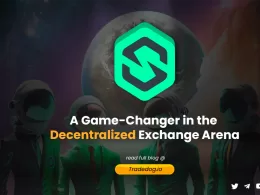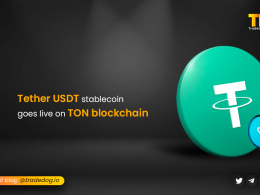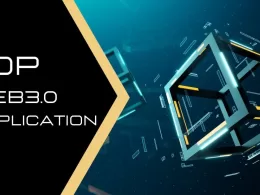Quick Links
The emergence of Web 3.0 technology has paved the way for a new generation of social media platforms that are decentralized, user-centric, and built on blockchain infrastructure. These platforms aim to address the shortcomings of traditional social media, such as centralized control, data privacy concerns, and lack of user incentives. In this blog post, we will explore the leading Web3-powered social media platforms that have the potential to revolutionize the future of social media.
Mastodon: Decentralized Microblogging
Mastodon is an open-source, federated social media platform with a decentralized social networking approach. Unlike traditional platforms, Mastodon comprises interconnected instances that users can choose to join. Each model operates independently but can communicate with users in some other cases. For instance, just like email, you can choose your server, whether it’s Gmail, Outlook, iCloud, or any other provider. By signing up for a specific server, you can ensure that you can interact with anyone you need to, as long as you have their address. It is a microblogging platform that shares similarities with popular platforms like Twitter. However, unlike centralized platforms, it operates as a federated network, functioning like email.
This architecture ensures greater autonomy and control for users, fostering a vibrant and diverse community. Mastodon’s decentralized model has gained traction as an alternative to centralized social media giants. With a user base of over 10 million and 1.2 million monthly active users (MAU), Mastodon’s commitment to decentralization offers a promising alternative to centralized Web2 platforms.
Minds: Empowering Privacy and Freedom of Expression
Minds is a decentralized social networking platform built on the Ethereum blockchain, placing user privacy and freedom of expression at its core. It enables users to control their data and monetize their content through cryptocurrency tokens called “Minds Tokens.” The platform integrates features such as encrypted messaging, live broadcasting, and a points-based reputation system. Minds is known for its commitment to combating censorship and providing a platform for diverse viewpoints. With a user base of 1 million MAU, Minds provides an open-source platform that prioritizes privacy and security. Users can express themselves freely without concerns about data harvesting or algorithmic manipulation.
Minds sets itself apart from major platforms like Facebook, Twitter, and Instagram by using a strictly reverse-chronological timeline. Unlike these platforms that use complex algorithms to determine what content you see, Minds presents content in the order it was posted. This straightforward approach provides a refreshing change from the algorithm-driven timelines of traditional social media.. Moreover, at the heart of the Minds experience is the rewarding system where users earn “tokens” when their posts receive interactions or spend time actively engaging on the platform. This incentivized model adds a layer of value for users, encouraging active participation and contribution within the Minds community.
Steemit: Rewarding User-Generated Content
Steemit is one of the pioneers in Web3-powered social media. It operates on the Steem blockchain, which powers over 300 dApps and allows users to create and curate content while rewarding them with the cryptocurrency STEEM. The platform utilizes a unique consensus algorithm called Delegated Proof of Stake (DPoS), where users can vote for witnesses to validate transactions and earn rewards. Users play a crucial role in the distribution of coins by upvoting posts that they find valuable. This system aims to reward users who contribute to the network and provide value to the community.
Steemit strives to reward voting and posting activities fairly based on their perceived worth. However, the specific weighting mechanism used to assess the value of users’ votes has been subject to scrutiny and evaluation. Steemit has gained popularity for its emphasis on user-generated content and transparent reward system. With a user base of 500,000 MAU, Steemit empowers users with decentralized and user-owned data. Content creators can monetize their contributions directly through its cryptocurrency ecosystem.
3Speak: Free Speech and Decentralized Ownership
3Speak enables content creators to own their onsite assets and communities through blockchain technology directly. The censorship-resistant platform ensures that assets cannot be seized or communities deleted. Users are rewarded with “Hive Tokens” and can receive donations in the “Speak Token”. Holding more tokens grants privileges and influence over platform governance. With true peer-to-peer connections, content creators have direct access to their audience. They can also create tokens, marketplaces, and stake-driven rewards, fostering dynamic and independent communities.
It fosters decentralization, user-owned data, and an open-source platform for content creators. With a user base of 200,000 MAU, 3Speak aims to provide an alternative space for free expression, challenging the centralized content moderation practices prevalent in Web2 platforms. While it shares common challenges with other Web3 platforms, including a smaller user base, technical complexity, and limited advanced features, 3Speak’s commitment to free speech sets it apart.
BlueSky: Jack Dorsey’s Vision for Decentralized Social Networking
Bluesky, a decentralized social app conceived by former Twitter CEO Jack Dorsey, operates independently from Twitter. Its user interface resembles Twitter and incorporates algorithmic choice, a federated design, and community-specific moderation. The development of Bluesky is supported by an open-source framework called the AT Protocol, providing transparency to external parties regarding its architecture and ongoing advancements.
Dorsey introduced the Bluesky project in 2019 during his tenure as Twitter CEO. The original intention was for Twitter to embrace the decentralized standard being built by a dedicated team of open-source architects, engineers, and designers funded by the company. However, after Elon Musk’s acquisition of Twitter, Bluesky and Twitter have become separate entities since late 2022. Dorsey has openly expressed dissatisfaction with Musk’s leadership, utilizing Bluesky as a platform for his concerns. Since its inception, Bluesky has garnered a user base of 50,000 and prominent figures and organizations, including Representative Alexandria Ocasio-Cortez (D-NY) and Twitter exile NPR, have sought refuge on Bluesky, finding a new online home in this decentralized social app.
Conclusion
Web3-powered social media platforms are reshaping the landscape of social networking by addressing the limitations of traditional platforms. Mastodon’s decentralized microblogging, Minds’ commitment to privacy and freedom of expression, Steemit’s rewarding user-generated content, 3Speak’s dedication to free speech and decentralized ownership, and BlueSky’s vision for decentralized social networking are leading the way in this decentralized era. As these platforms continue to grow their user bases, they offer users greater control, privacy, and incentives, paving the way for a more user-centric and secure social media experience.










